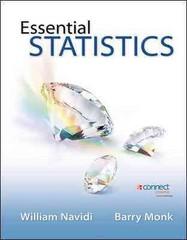
Chapter 10 or 23 Monopoly: Pre-Class & In-Class Activities Packet Name/I.D. Number: Section: Date: Part 2. Matching: Match the Key terms in Column "A" with the definitions in Column "B" by writing the block (upper) case letter of your choice under column "A" and match the definitions in column "B" with the meanings or examples or real world applications in column "C" by writing the small (lower) case letter of your choice under column "B". Column "A" Column "B" Column "C" 1. Monopoly A. A price structure in which the seller charges a uniform price per unit a. The art of making money by taking advantage of the for one specific quantity, a lower price for an additional quantity & so on opportunity created to buy low & then sell high. 2. Public Franchise B. The net value (value to buyers over and above costs to suppliers) of D. A pricing strategy aimed at charging different prices to different consumers or geographical location. 3. Natural Monopoly the difference between the competitive quantity of output (where P = MC) and the monopoly quantity of output (where P > MC); C. The welfare loss to society as a result of not producing the 4. Price Searcher the loss of not producing the competitive quantity of output level of efficient output or due to market inefficiencies that C. A price structure in which the seller charges different prices for the exist under monopoly. 5. Deadweight Loss product it sells and the price differences do not reflect cost differences. d. A pricing strategy based on the number of units sold. For example, retail pricing versus whole sale pricing. of Monopoly D. Actions of individuals and groups who spend resources to influence e. An inefficient outcome created by the inability to reduce public policy in the hope of redistributing (transferring) income to costs associated with monopoly production due to lack of 6. Rent Seeking themselves from others competition. E. A price structure in which the seller charges the highest price that f. The action of lobbyists hired to influence public policy in 7. X-Inefficiency each consumer is willing to pay for the product rather than go without it. favor of certain organized groups or to maintain industry F. The increase in costs due to the organizational slack in a monopoly wide interest. 8. Price resulting from the lack of competitive pressure to push costs down to g. A pricing strategy adopted by a monopolist where every Discrimination their lowest possible level. consumer pays what she/he is willing and able to pay for a G. A theory of market structure based on three assumptions: There is given product. Also known as "skim pricing". 9. Perfect Price one seller, it sells a product that has no close substitutes, and the h. A situation whereby the seller charges different prices to barriers to entry are extremely high. different consumers unjustified on the basis of cost Discrimination H. Buying a good at a low price and selling it for a higher price. differences. 10. Second-Degree 1. A price structure in which the seller charges different prices in i. A monopolist who has control over the supply of a product & capable of charging what ever price she/he wishes to different markets or charges different prices to various segments of the charge Price Discrimination buying population. j. A type of monopoly allowed by the government due to its J. A right granted to a firm by government that permits the firm to large scale operations, lowest possible cost of production 11. Third-Degree provide a particular good or service and that excludes all others from and the ease to do business. doing so. K. The license issued by a government unit to a business Price Discrimination K. The condition where economies of scale are so pronounced that only organization to have exclusive right to do business in its one firm can survive. jurisdiction. 12. Arbitrage L. A seller that has the ability to control to some degree the price of the I. A market structure dominated by a single firm that is product it sells. capable of controlling its supply & capable of fixing the price of the product it sells. 3








